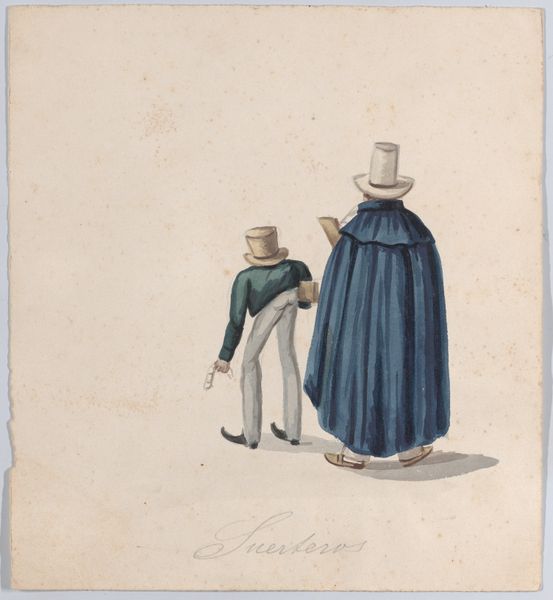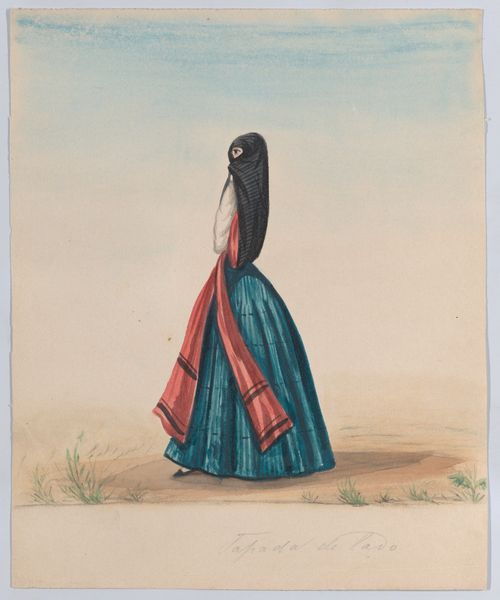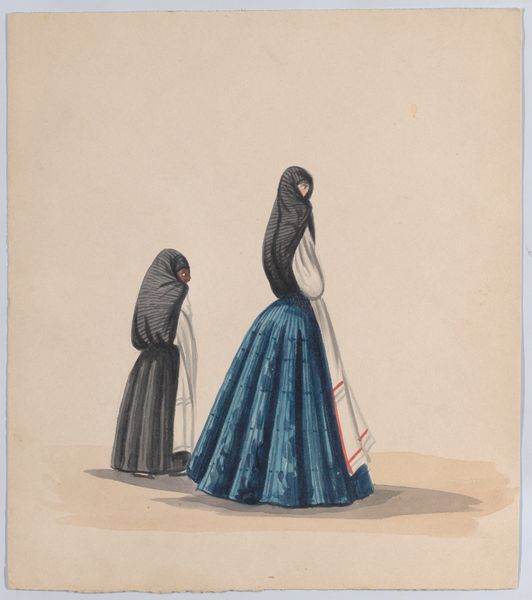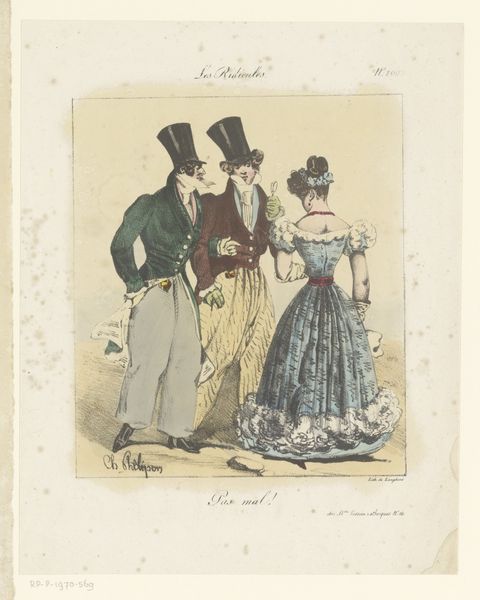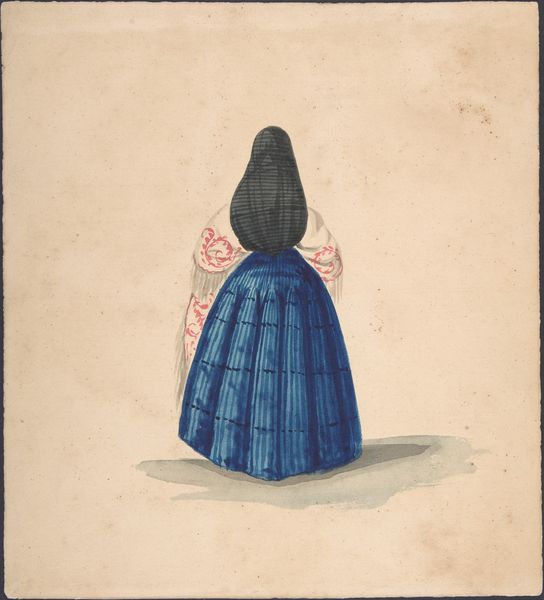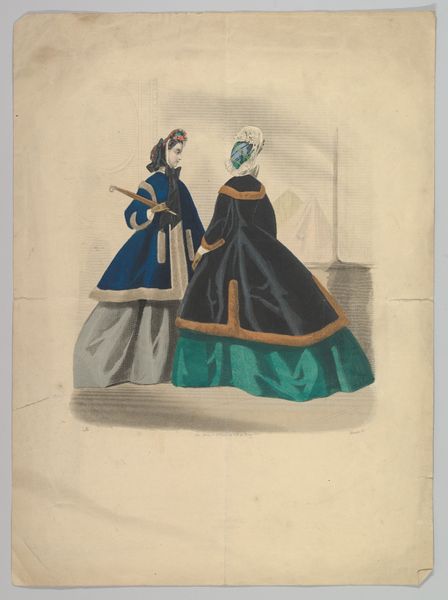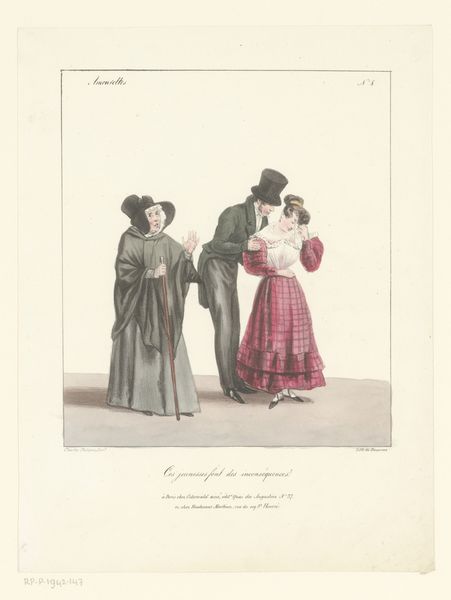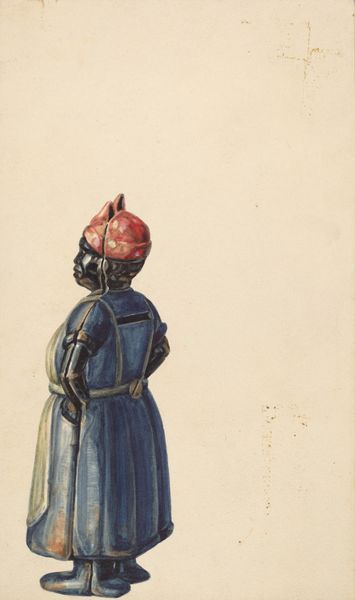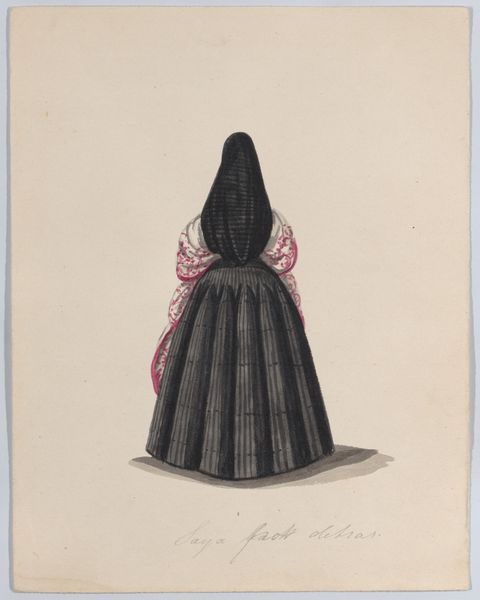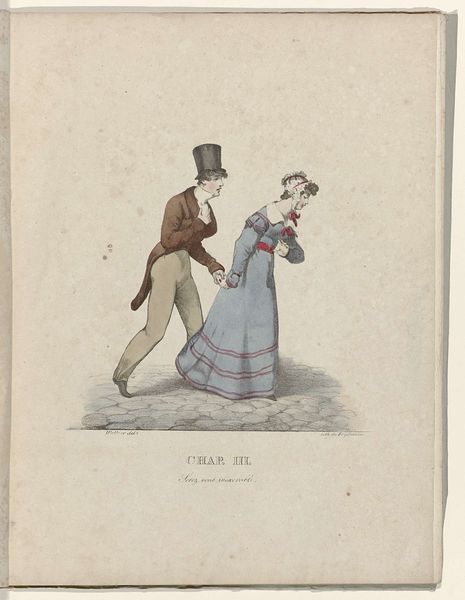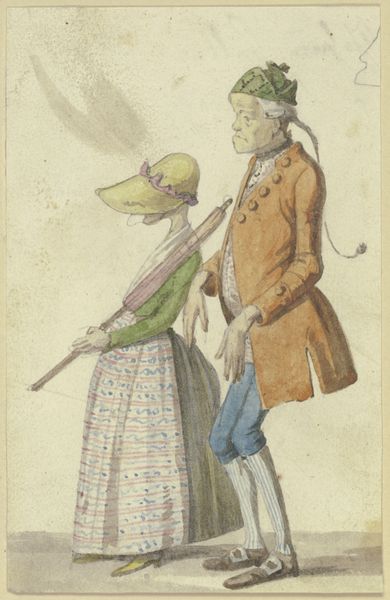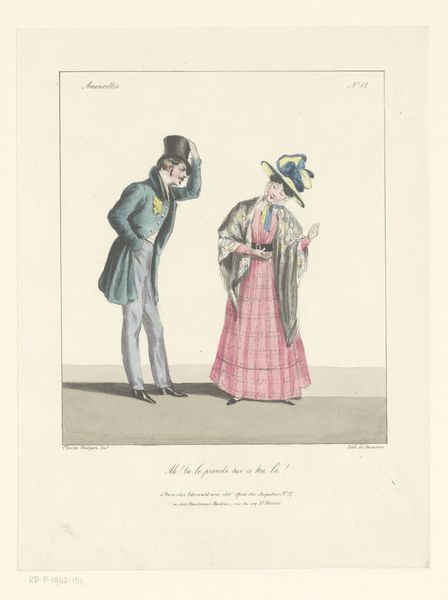
drawing, print, watercolor
#
portrait
#
drawing
# print
#
figuration
#
watercolor
#
romanticism
#
genre-painting
Dimensions: sheet: 9 1/8 x 9 1/4 in. (23.2 x 23.5 cm)
Copyright: Public Domain
Curator: This lovely little watercolor, made sometime between 1840 and 1850, is titled "A Woman, Followed by Her Servant." It's currently held here at the Metropolitan Museum. You know, it strikes me as simultaneously quite formal and incredibly intimate. Editor: My immediate impression is one of constraint, both in the physical posture of the figures and the suggested social dynamic. The woman's veiled face speaks volumes about enforced modesty and lack of autonomy, and even the servant, though upright, seems bound by duty and class. Curator: I feel that, I do. Yet there's a delicate airiness in the watercolor washes, especially in the woman’s billowing skirt and the gentle curve of her shawl. It softens the austerity somewhat, don’t you think? Like a dream filtered through a very proper sensibility. The unknown artist, in my mind, felt sympathy toward the individuals. Editor: I can appreciate that interpretation. The use of watercolor does lend a certain romantic softness, very typical of the era, yes, a kind of escape or idealization through beauty. But I’m also considering how images like these circulated, and who the audience might have been. Genre paintings such as this helped construct and reinforce power dynamics through their mere display of servitude, an artistic tool reflecting the realities and constraints on marginalized people during that period. Curator: Hmm. A melancholy observer perhaps rather than a participant. Think of it as more personal. Consider that it might have been one leaf, so to speak, torn from a larger visual travelogue of the region? A quick rendering and recording of the exotic local cultures— Editor: Yes, exoticizing, and simultaneously reinforcing hierarchies. We can see her headdress and flowing patterned shawl of her upper-class ranking. The detail contrasts against the simplicity of her servant’s attire and the controlled blue color story of his livery to illustrate the imbalanced wealth structure of the time. These images naturalized unequal access. Curator: It is sad, the way in which society can pigeonhole, but, at its root, isn’t painting really a sort of theft anyway? Stealing moments from time, turning fleeting glimpses into frozen icons? Perhaps, by freezing them in paint, the painter hoped, in some subconscious way, to elevate them. Or, perhaps the artist's true goal might have simply been recording what he believed to be a disappearing local custom for the benefit of curious observers? Editor: I would propose both interpretations, Curator. It seems images are always complicated! I am grateful, as ever, to experience another facet through your gaze! Curator: And vice-versa, it’s a lovely painting that speaks volumes of its time—and perhaps, unexpectedly, even something of ours.
Comments
No comments
Be the first to comment and join the conversation on the ultimate creative platform.

